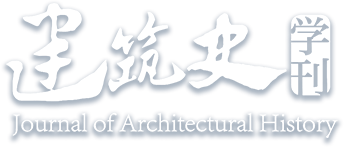Abstract:
Boundary painting (
jiehua) is a unique kind of Chinese painting that is executed with measuring devices such as rulers to create an accurate and detailed depiction of architecture. Historical documents mention the procedure of size “conversion”, but they do not describe a particular algorithm. To explore the historical conversion method used in boundary painting, this article first analyzes the dimensions of architecture depicted on the
Minghuang bishugong tu (The Summer Palace of Emperor Ming Huang) and makes some conjectures regarding how the design in the painter’s mind could have looked like; then, the article compares the size of the intended design with the size of the objects actually depicted and identifies the logic operation behind the conversion; finally, the article restores the architecture depicted on the boundary painting virtually. By doing so, the article establishes a three-step process for the restoration of architecture depicted on boundary painting that entails observation, analysis, and restoration.


 下载:
下载: